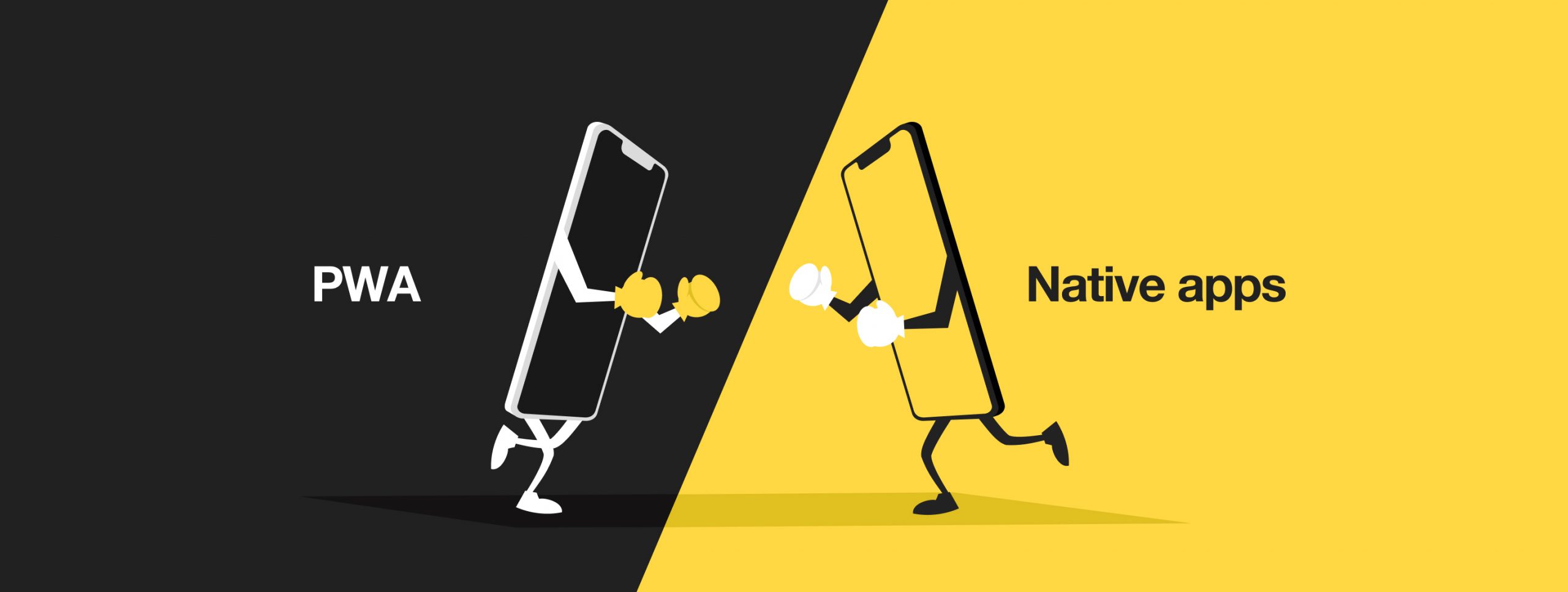Mobile app development is a business investment that requires a careful choice. There is no winner among Native apps, Hybrid apps, Progressive Web Apps and Flutter vs PWA as there are right cases for all.
What are the key factors and differences between PWA and Native apps you need to consider?
- Installation
The need for installation is one of the main differences between Native apps and PWAs. If you have decided to develop a Native app you will have to place it in the marketplace so your audience can get it. The presence of the application on the Home screen of a phone makes your product recognizable among customers and even among competitors. On the other hand, the ability to use PWA without installation saves phone memory and relieves its product owner of app stores’ administrative responsibilities. PWA is more flexible as a user decides whether to add it on the Home screen by himself. The newest Android versions even offer to install PWA directly to your device. - Accessibility
While Native apps are limited to Android and iOS devices, PWAs are cross-platform and can be accessed by URL. It makes product sharing simpler and increases its potential to appear in the search engines. PWAs are tracked with a traditional SEO, so you can influence its ranking with keywords and other optimization tools. For optimization in app stores, you need to use specific ASO (App Store Optimization) approach. Both mobile applications and PWAs can be partly used offline. - Performance
Android and iOS are leading platforms in UI and UX design, so cross-platform PWA will never provide you with the Native app performance. As Native apps are built using the core programming language of a specific platform they provide users with convenient navigation and great working speed. However, PWA can give to your audience an app-like experience and more responsive design compared to regular web sites. It also delivers content to users faster thanks to service workers. - Feature set
Android and iOS applications allow you to implement more specific features. For example, PWA is useless if Bluetooth capabilities like geofencing are crucial. Native apps easily connect with various phone features like camera, contacts, calendar and so on. PWA has some restrictions similar to web sites that means you can make just several connections through API like social media logins. Native apps also win in terms of security, as they allow to build a number of security measures like multi-factor verification and certificate pinning. - Resources optimization
PWA development is more cost-effective in comparison to Native apps thanks to cross-platform ability. If you already have a website you want to transform into PWA, it can be configured with the help of specific tools instead of development from scratch. Apps’ overflowing in the markets has led to high competition reducing the likelihood of your app to be noticed. With PWA you don’t have to submit the application in store and waste time for its approval.
The choice PWA vs react Native apps development should be done considering the feature set that your software needs to cover and the audience you want to reach. Exposit engineers can provide you with the most suitable software solution for your business.






